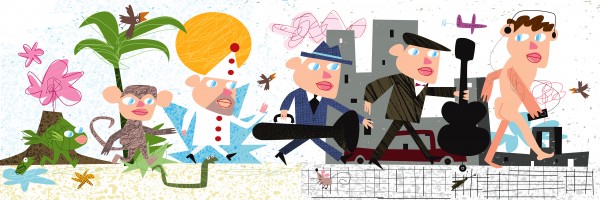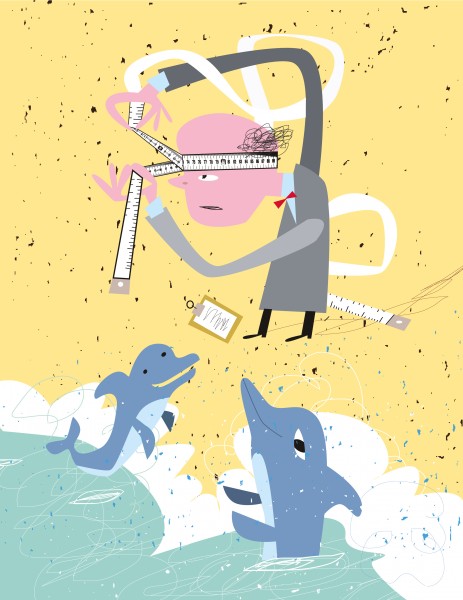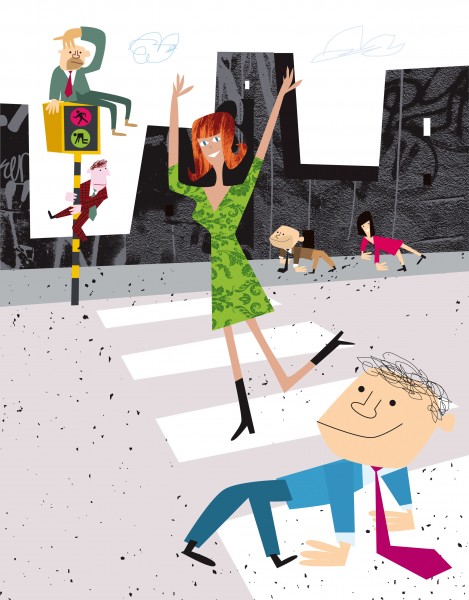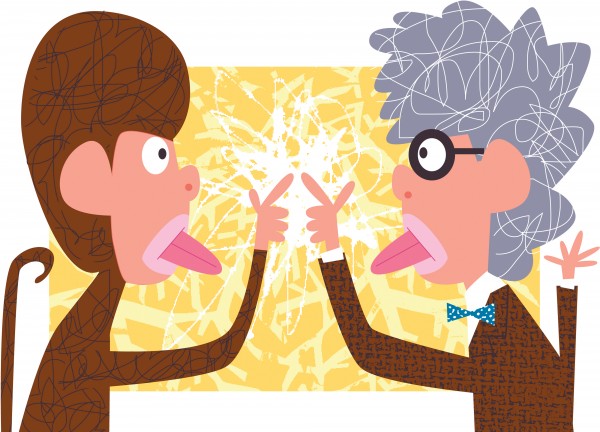Laughing Matters
Tickled pink

In 1962, a girls’ boarding school in Tanganyika (now Tanzania) had to be closed because of an uncontrollable epidemic of hysterical laughter. Two months later, when the school reopened, the girls started laughing again, forcing a second closure. As these episodes illustrate, laughter is largely involuntary, and may reduce its victims to helplessness and even, paradoxically, to tears. By the same token, it takes a trained actor to produce convincing laughter on demand, although my father, being Irish, was able to laugh so convincingly at incomprehensible jokes told by some local worthy that his mates would later phone to ask what the point of the joke was. He had to confess he had no idea.
Aristotle thought that laughter was uniquely human, but we do find laughter-like behaviour in other animals, especially if they are tickled. Even rats respond to tickling with a sequence of high-frequency sounds that might be taken to be laughter. Laughter also seems to feature naturally in rough-and-tumble play in young animals, involving tickling and non-injurious contact. Chimpanzees at play make a smiley “play face”, with the mouth open, upper teeth covered and lower teeth bared, while they make pant-like laughing noises. You should watch out, though, if the upper teeth are also bared, because this signals aggression rather than playfulness.
Chimpanzee laughter nevertheless differs from human laughter in interesting ways. When we humans laugh, we emit sounds in sharp bursts on the outgoing breath, but in chimps the sound is emitted on both the incoming and outgoing breath. In humans, moreover, the sound is rhythmically broken on the same breath, so the sequence of sounds—ha-ha-ha-ha-ha—is emitted before you take another breath, whereas chimp laughter remains constant within each breath and is broken only as the breath switches between incoming and outgoing. Unlike chimps, we humans can alter the shape of laughter, as in ho-ho-ho, ha-ha-ha, or he-he-he. In these respects, human laughter seems to reflect the changes in voice control necessary for the production of speech, although laughter itself is very different from articulate speech.
We humans also laugh when tickled. Socially, though, tickling is a ticklish business. You can be tickled by a friend or lover, but tickling by a stranger is generally considered offensive, tantamount to inappropriate touching. Individuals also differ markedly—some enjoy being tickled, some hate it. Tickling is often sexual, and one survey showed that people are seven times more likely to be tickled by someone of the opposite sex than by someone of the same sex.
If you try to tickle yourself it simply fails to register. The reason seems to be that the act of tickling cancels the brain signal that leads to the sensation of tickling. This idea has been tested with a robotic tickle machine, which applies a stroking stimulus to the sole of the foot. This produces a tickling sensation if it operates autonomously, without input from the person being tickled. If the tickled person operates the machine, the tickle sensation is greatly diminished, but increases when a delay is introduced between the hand operation and the movement of the stimulus. Self-tickling with the hand is also more likely to be effective if the hand is on the opposite side of the body from the site that is tickled. For example, tickling the sole of the foot with the hand on the opposite side is slightly more effective than tickling with the hand on the same side, probably because cross-body tickling introduces a slight delay in the brain between the movement signal and the tickle signal.
Laughter probably originated in play, which is important in the social and physical development of many species. It may have evolved as a signal of non-aggression, allowing play to proceed without threat of injury. Sigmund Freud suggested similarly that laughter is a signal of relief, when an apparent danger proves benign. “Sometimes,” he said, “a cigar is only a cigar.” Slipping on a banana skin is funny only if the person is unhurt.
In humans, then, laughing extends well beyond the slap-and-tickle of play, and we find humour in many situations. But what about other animals? Do turtles have a sense of humour? In the absence of verbal communication it’s hard to know, but we can perhaps gain some insight into ape humour from captive chimps or gorillas taught to communicate in signs. These animals do occasionally joke around, such as when Koko, a signing gorilla in California, offers rocks and inedible objects to people as food, or calls her caregiver a “dirty toilet” when upset with her. More revealing, perhaps, is the male chimp who urinated on his keeper and then made the sign for “funny”. Like small children, chimps seem to find hilarity as well as insult in the most basic bodily functions.
It’s a funny business, laughing, and we still don’t fully understand it, but if we did, it might spoil the point of our jokes entirely.

















